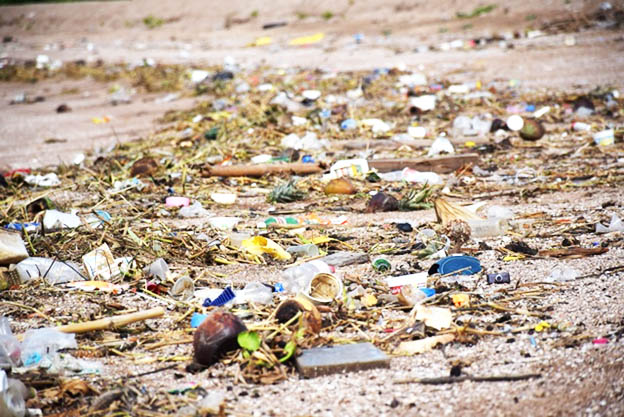The current fragmented approach taken by individual countries and organizations is insufficient, and a unified global effort is required to effectively tackle the issue.
A global treaty must help drive the elimination of problematic plastics such as cutlery, straws or pigmented PET bottles and facilitate maximizing the circulation of remaining plastic through reuse and recycling.
Extended Producer Responsibility (EPR) holds producers responsible for the entire lifecycle of their products, encouraging them to design more sustainable packaging and invest in recycling infrastructure.
The ultimate solution to our plastics crisis is a circular economy.
Next week in Paris, a United Nations-sponsored gathering of nations, business groups and activists will gather to advance a treaty aimed at curbing plastic pollution worldwide.
If done thoughtfully and comprehensively, the treaty could be a game-changer. But that’s a two-liter-sized “if.” The open question is whether the measures being considered are sufficient to stem the still-growing tide — or is it a tsunami now? — of plastic waste, including the empty packaging and other detritus already overwhelming the world’s landscapes and waterways.
The quest for a Global Treaty on Plastic Pollution, a legally binding agreement, was set in motion late last year at the First Session of the Intergovernmental Negotiating Committee on Plastic Pollution, known in U.N. parlance as INC-1. The follow-up meeting, INC-2, begins May 29. It will attempt to zero in on the thorny issues the treaty should address. The goal is to have a final draft ready for ratification in 2024.
Among those thorny issues, according to a U.N. document issued in April: potentially banning or phasing out certain polymers and plastics; reducing the dispersion of microplastics into the air, water and soil; encouraging circular designs of products and packaging; cleaning up plastics already in the environment; and facilitating a just transition, “including an inclusive transition of the informal waste sector” in developing economies. (Hyperlink added.)
It seems we’ve come a long way from the days, not very long ago, of fretting over plastic straws.
The treaty is part of a growing wave of concern by investors, regulators, activists and brands about the impact of plastics on the environment and human health. Last year, for example, at Amazon’s annual general meeting, just under a majority — 48 percent — of shareholders voted in favor of a resolution, submitted by the activist group As You Sow, asking the e-commerce giant to disclose its growing plastic packaging use.
“We’ve come a long way from the days, not very long ago, of fretting over plastic straws.
”This month, as my colleague Jesse Klein reported, the advocacy group CDP announced it will start collecting data about companies’ use of plastics in order to provide greater visibility over how they are contributing to the plastic waste crisis. Companies are being asked to disclose their “most problematic” production and use of plastic polymers, durable plastics and plastic packaging.
All this is taking place at a time when the production and consumption of plastics continues its unyielding growth. Global plastics production doubled during the first two decades of the 21st century, according to the Organisation for Economic Co-operation and Development. According to its “Global Plastics Outlook: Policy Scenarios to 2060,” plastic waste is on track to nearly triple by 2060 worldwide, with around half going into landfill and less than a fifth recycled.
Wrote the report’s authors: “Without radical action to curb demand, increase product lifespans and improve waste management and recyclability, plastic pollution will rise in tandem with an almost threefold increase in plastics use driven by rising populations and incomes.” The report estimated that almost two-thirds of plastic waste in 2060 will be from short-lived items such as packaging, low-cost goods and textiles.
The runup to INC-2 has seen the publication of other reports on the plastics problems. Last week, the U.N. Environment Programme (UNEP) published “Turning off the Tap: How the world can end plastic pollution and create a circular economy,” examining the economic and business models needed to address plastics’ impacts, from reuse to sustainable plastic alternatives. Also last week, the advocacy group WWF published “Breaking down high-risk plastic products: Assessing pollution risk and elimination feasibility of plastic products,” which aimed “to identify and prioritize plastic product groups with the highest pollution risk, and the control measures that would be most suitable to address them.”






